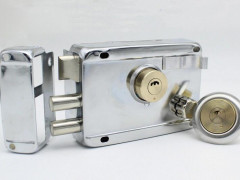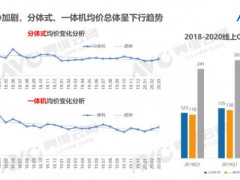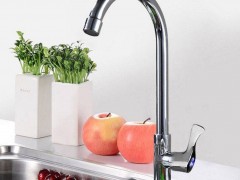五金之家讯:Mechanical Properties
Typical mechanical properties for grade 301 stainless steels are given in table A.
Table A. Mechanical properties of 301 grade stainless steel
Grade 301 Temper ASTM A666Tensile Strength (MPa) min.Yield Strength 0.2% Proof (MPa) min.Elongation (% in 50mm) (thick.>0.76mm) min.Bend Test (thickness > 1.27mm)
Bend Angle (°)Factor
AnneaLED51520540--
1/16 Hard620310401801
1/8 Hard690380401801
1/4 Hard86051525902
1/2 Hard103576018902
3/4 Hard120593012903
Full Hard12759659905
Bend test is around a diameter of the Bend Factor multiplied by the steel thickness.
Physical Properties
Typical physical properties for grade 301 stainless steels are given in table B.
Table B. Physical properties of 301 grade stainless steel
GradeDensity (kg/m3)Elastic Modulus (GPa)Mean Coefficient of Thermal Expansion (mm/m/°C)Thermal Conductivity (W/m.K)Specific Heat 0-100°CElectrical Resistivity (nW.m)
0-100°C0-315°C0-538°Cat 100°Cat 500°C(J/kg.K)
30180001931717.218.216.221.5500720
Possible Alternative Grades
304 The lower work hardening rate of 304 is acceptable, giving better ductility required for forming.
316 A higher corrosion resistance is required, and the lower work hardening rate of 316 can be compensated for.
Corrosion Resistance
Corrosion resistance is similar to that of 304. Good resistance in applications involving external exposure to mildly corrosive conditions at ambient temperatures.
Heat Resistance
Good oxidation resistance in intermittent service to 840°C and in continuous service to 900°C, although not usually chosen for this environment.
Heat Treatment
Solution Treatment (Annealing) - Heat to 1010-1120°C and cool rapidly. Use low side of range for intermediate annealing. This grade cannot be hardened by thermal treatment.
Cold Working
Grade 301 and its low carbon variants are used where a high strength stainless steel is required. The grades work harden at the very high rate of approximately 14MPa/%Ra (14MPa increase in tensile strength for each 1% reduction of area of cold work), resulting in high achievable strengths from cold rolling and from roll forming. The strain-hardened austenite is at least partially transformed to martensite by this work. Despite the high strengths achieved there is still enough residual ductility to enable severe cold deformation. Although non-magnetic in the annealed condition, when cold worked the grade becomes strongly attracted to a magnet.
Welding
Good characteristics suited to all standard methods. Grade 308L filler rod is recommended. Welds in Grade 301 must be annealed for maximum corrosion resistance; this is not necessary in 301L or 301LN. Welding and post weld annealing will both remove high strength induced by prior cold rolling.
Spot welding is commonly used to assemble cold rolled 301 components. The very small heat affected zone associated with this rapid welding technique results in little reduction of overall component strength.
Applications
Typical applications include:
· Rail car structural components - often roll formed, brake pressed or stretch formed to profiles but also used flat.
· Airframe sections
· Highway trailer components
· Automotive wheel covers
· Wiper blade holders and clips
· Toaster springs
· Stove element clips
· Screen frames
· Curtain walls
五金之家主要为五金,五金工具,五金交电,五金配件十大品牌行业提供的各种新闻资讯、五金工具的装修效果图、五金工具网上商城和五金工具的分类信息,敬请登陆五金之家:http://wujin.jc68.com/








